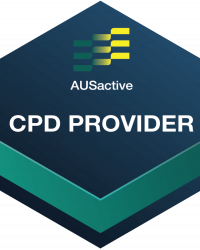Reformer Repertoire
Leg Work:
Running Preparation
Alternate Names
N/A
Derived From
Classical Reformer: Running Preparation
Primary Element
Mobility
Why for Primary?
To develop and improve mobility at the hip joint in extension.
Secondary Element
Strength
Why for Secondary?
To develop and improve gluteal and leg muscle strength, particularly in the gluteal muscles of the back leg, and the quadriceps of the front leg.
Tertiary Element
Stability
Why Tertiary?
To create, develop and connect with the pelvis stabilisation muscles such as gluteus medius and the deep core transversus abdominis whilst working in flexion and hip extension.
Repetitions
8-10
Apparatus Setup
Suggested springs
- Number system: 1 spring
- Colour system: 1 x red spring
- Resistance: light to medium
Foot bar one position down from vertical, or on many Reformers the top angled position. If the client if particularly short, move the Foot Bar up to the vertical position to its easier to take hold of with the hands and maintain the ideal torso positioning.
Plane of Motion
Sagittal
Targeted Muscles
To create, develop and connect with the pelvis stabilisation muscles the focus is gluteus medius and gluteus maximus and the deep abdominal muscles transversus abdominis.
To work on strengthening the leg muscles the focus is on the below:
The ‘knee extensors’ or quadriceps muscle group of the front leg
- Rectus femoris
- Vastus intermedialus
- Vastus medialis
- Vastus lateralis
Hip extensors – muscles which open or lengthen the front of the hip and move the leg backwards. Primary hip extensors include:
- Gluteus maximus
- Posterior head of the adductor magnus
- Hamstrings
Warnings
This exercise may be difficult for clients with tight hip flexor muscles, as that may restrict their range of motion in the hip extension of the pressing leg. It may also be unsuitable for clients with some hip, knee or ankle issues or if hip extension if contraindicated.
Execution
Kneel in a quadruped position with the heels of the hands on the foot bar at shoulder width apart. Place one foot against the shoulder block, the other at the front edge of the carriage in line with the ASIS or hip bone.
Inhale to lower the front knee, drawing the pelvis forward towards the springs and extending the back leg (keeping the knee down). Exhale to engage the low abdominal muscles and tilt the pelvis forward bringing the carriage back to the starting position. To increase the intensity of the exercise float the back knee of the carriage, and straighten the back leg as the front knee lowers. Emphasise maintaining stability of the shoulders and arms, nothing above the waist moves.
Observations
Do a body scan of the client taking note of the following points
- Pelvis
- Are the hip bones even horizontally or is the client leaning towards and biasing the supporting standing side?
- Is the posterior tilt of the pelvis initiating the drop of the front knee? And is the anterior tilt of the pelvis initiating the lift of the front knee up again?
- Is the client arching their back to achieve the hip extension movement, or are they able to stay within a range of motion pressing back that enables the pelvis to stay still?
- Legs
- Is the back leg moving into hip extension with control? Avoiding locking into the back knee and arching the lumbar spine?
- If the the back leg is lifted, is the knee hovering only a few centimeters off the carriage when coming back into the start position?
- Feet
- Are the toes of the back foot tucked against the shoulder block for support, and are the toes of the front foot just over the edge of the carriage so the balance point is the ball of the front foot?
- Apparatus
- Is there tension on the springs the whole time? Or is the carriage crashing to the stopper or ‘park’ indicating a lack of control and a push by the client beyond their ideal range of motion? If the carriage is crashing encourage the client to reduce their range of motion and slow their movement down to focus on controlling the return phase, or reduce the spring load so the client can control the spring.
Learning Style Technique Cues
- Auditory: Engage the transverse abdominis before moving;
- Auditory: Avoid elevating the scaputae
- Visual: Maintain your gaze or eyeline on the same spot on the floor, avoiding moving forward and back with the body
- Kinaesthetic: Feel the abdominals engage to start the movement, then the knees follow
Modifications and Variations
- Regress to Knee Stretch Series: Knee Stretch
- Progress to Leg Work: Full Running (Advanced)
Series and Transitions
This exercise is part of the Leg Work Singles series which includes a range of other exercises in the fundamental and progressive repertoire. The Leg Work series can also be found in the Wunda Chair repertoire and the Cadillac repertoire.

